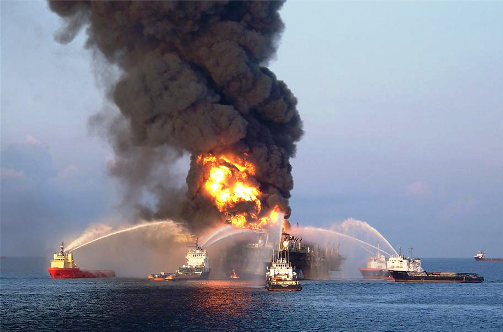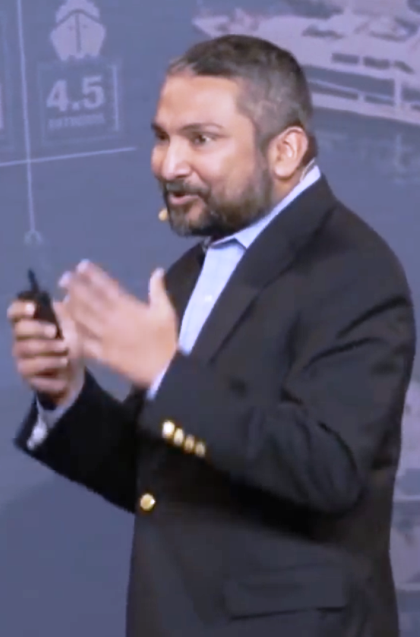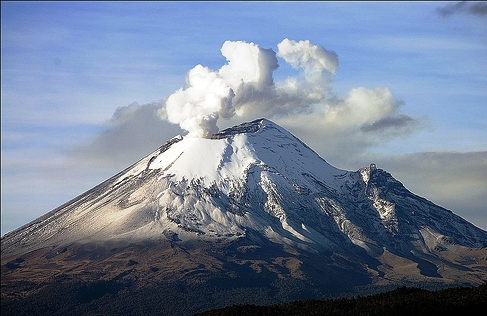
Can the Internet of Things Help Us Avoid Disasters?
Despite our attempts to pacify and tame our environment, we live in a dangerous world. Whether it’s natural disasters, such as volcano eruptions, earthquakes, and asteroid strikes, or man-made calamities like wars, oil well blowouts, and climate change, human suffering has been a guarantee through history. But with today’s big data technologies and the Internet of Things (IOT), some say some types of disasters may soon be a thing of the past.
 |
|
| The Deepwater Horizon oil spill claimed 11 lives and caused tens of billions of dollars in damages. | |
It may not seem like it, but we are in a state of relative peace and harmony in this world. There are no major wars, and most economies are growing–albeit slower than many would like. Natural and man-made disasters around the world caused about $40 billion in insured losses in 2013, the second straight year that losses came in substantially below the 10-year average of $60 billion, according to risk and reinsurance analyst Guy Carpenter & Co.
Despite the relative run of good luck lately, you can wager that Mother Nature will eventually have her say. Tornadoes and hurricanes can be forecast, but they cannot be stopped. Some “Hand of God” style disasters, such as earthquakes and asteroid strikes, can’t be accurately forecast with our current technology. Human error is pretty much a guarantee when it comes to industrial accidents in mining and transportation.
But technologists say that, armed with the appropriate forewarnings through big data and IOT, we can significantly blunt the impact of future disasters. That was the gist of the presentation that Kaushik Das, the senior principal data scientist at Hadoop software developer Pivotal, delivered at the recent Strata conference.
Das wondered aloud whether we would ever see something like the Deepwater Horizon well blowout that occurred four years ago this April. “Can the Internet of Things help us prevent something like that?” he said in his recorded comments. “What if we could do to prevent disasters like this? Of course we need better safety protocols, we need better regulations. But what if the entire system was smart and it would know when something went wrong and would be able to take action. Isn’t that the best way to prevent something like that?”
 |
|
|
Kaushik Das, senior principal data scientist at Pivotal. |
|
That future is not so far away, Das said, and the IOT is ushering us quickly to that era. “We have all the ingredients of a smart system in place,” he said. “We have the sensors, which are smart and getting smarter all the time.” We have smart actuators, he said, and we even have smart blowout preventers, such as the one manufactured by General Electric (which owns a chunk of Pivotal, incidentally).
“Finally we have decision support tools that can bring all this big data in and analyze that, and give the human operators a very good idea of what’s going on, and that’s great,” he said. “But there are delays between one stage and another. There is a lot of room for error. The problem is that there is no brain. We have the eyes and limbs. But they’re not connected to a brain seamlessly.”
Das envisions that “brain” being composed of a data analytics platform, such as Pivotal’s, and the data science algorithms that run within it, such as the MADlib library of machine learning algorithms. In this manner, the IOT–in combination with GE’s smart blowout preventer, smart actuators, Pivotal’s Hadoop platform, and MADlib algorithms–could keep the next Deepwater Horizon disaster from occurring.
“When we see the propensity of a blowout happening in real time, we use the previously created model to initiate action,” Das said. “It’s not just action that shuts down the whole system and sends an alert to the human operator in the control room, but it can also do a lot of preventive maintenance and raise the overall productivity of the system.”
Big data is helping to blunt natural disasters, too. Take the case of Popocatepetl,
 |
|
| Popocatepetl | |
North America’s most active volcano, which sits a mere 40 miles southeast of Mexico City. Seismologists have detected a recent spike in seismic activity, according to a recent video on OpenEd.
While the millions of people in Mexico City are probably safe from a blast, there are numerous local villages on the southern flank of the volcano that would be wiped out in a Mount St. Helens-style eruption. To help prevent a calamity, government seismologists have set up a sophisticated data collection network to serve as an early warning system for those villages.
“Now we can look at much more information, we can pull it down right away and we can do a lot of analysis,” Dr. Carlos Valdes, head of national seismological service for UNAM, said in the video. “[With] all the data and information we have right now, we can definitely make better decisions.”
It’s not feasible to think that big data and IOT will totally eradicate natural and man-made disasters. But there’s no reason to think that we couldn’t make a substantial dent in the human suffering by putting the IOT’s data gathering and big data analytics platform to proper use.
The germ of the idea has been seeded, and now it’s time to help it grow. “We have lots of brains here,” Das said at Strata. “So let’s put our brains together and make this happen. The shift has already happened, but let’s take it to its logical conclusion.”
Related Items:
Big Algorithms to Change the World
Fighting Sepsis with Real-Time Analytics
I Didn’t Know Big Data Could Do That!



























